A little while ago I was grabbing some lunch from the Marks and Spencer food hall near my office and noticed a series of four in-store advertising posters stretching along the wall. Each of the posters drew attention to one food product type and one M&S producer/supplier of that product.
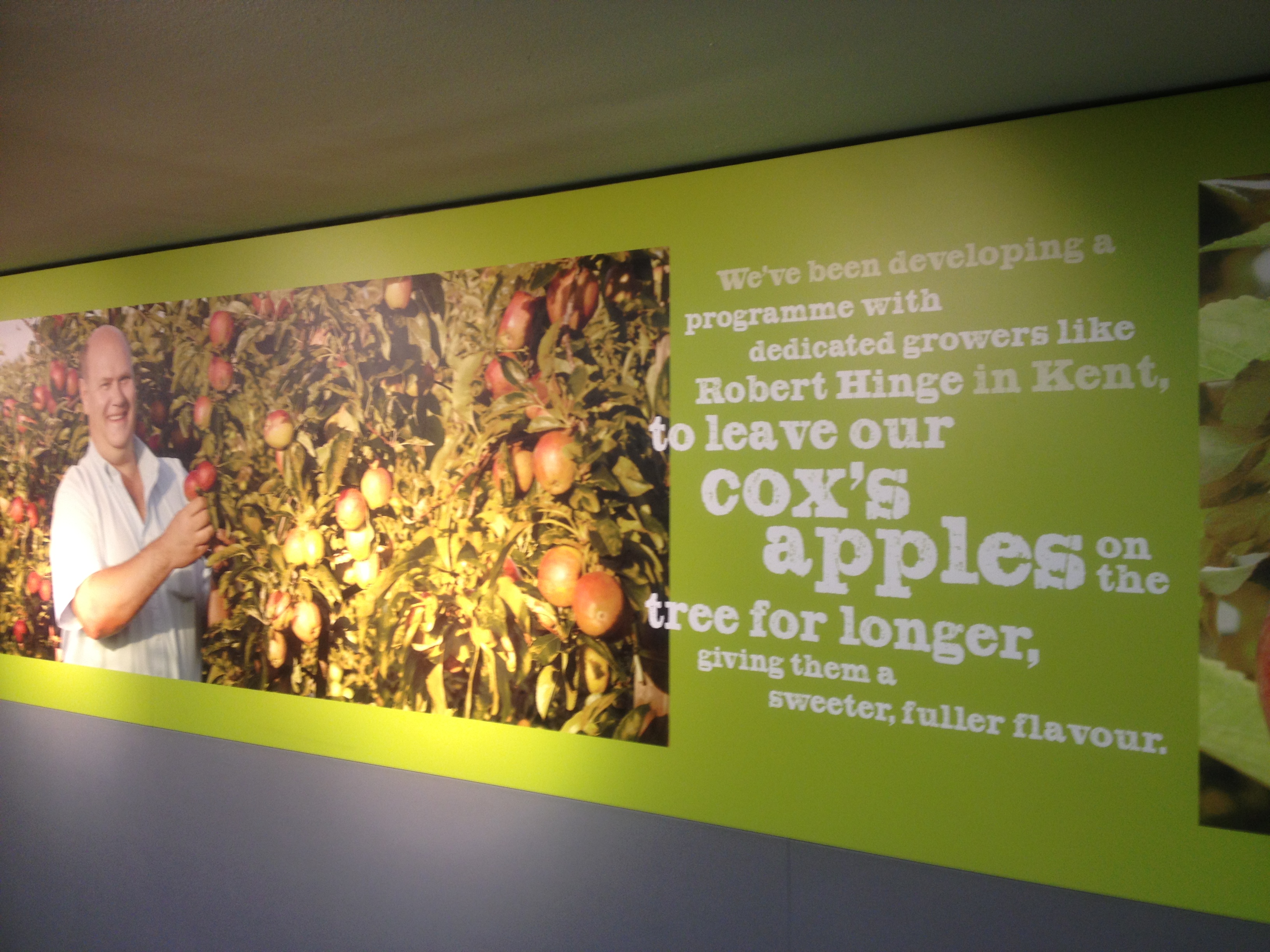
One poster featured John Mearns, a pig farmer from Oxfordshire, another strawberry producer Marion Regan, a third featured Robert Hinge, an apple grower from Kent, and the fourth highlighted Orkney crab fishermen.
I was immediately impressed with how effective the posters were at communicating their message.
Take a look at the strawberry poster:
For Marion Regan, soft fruit has been a family business for 115 years. Enjoy juicy fresh strawberries from her Hugh Lowe Farm throughout the summer.
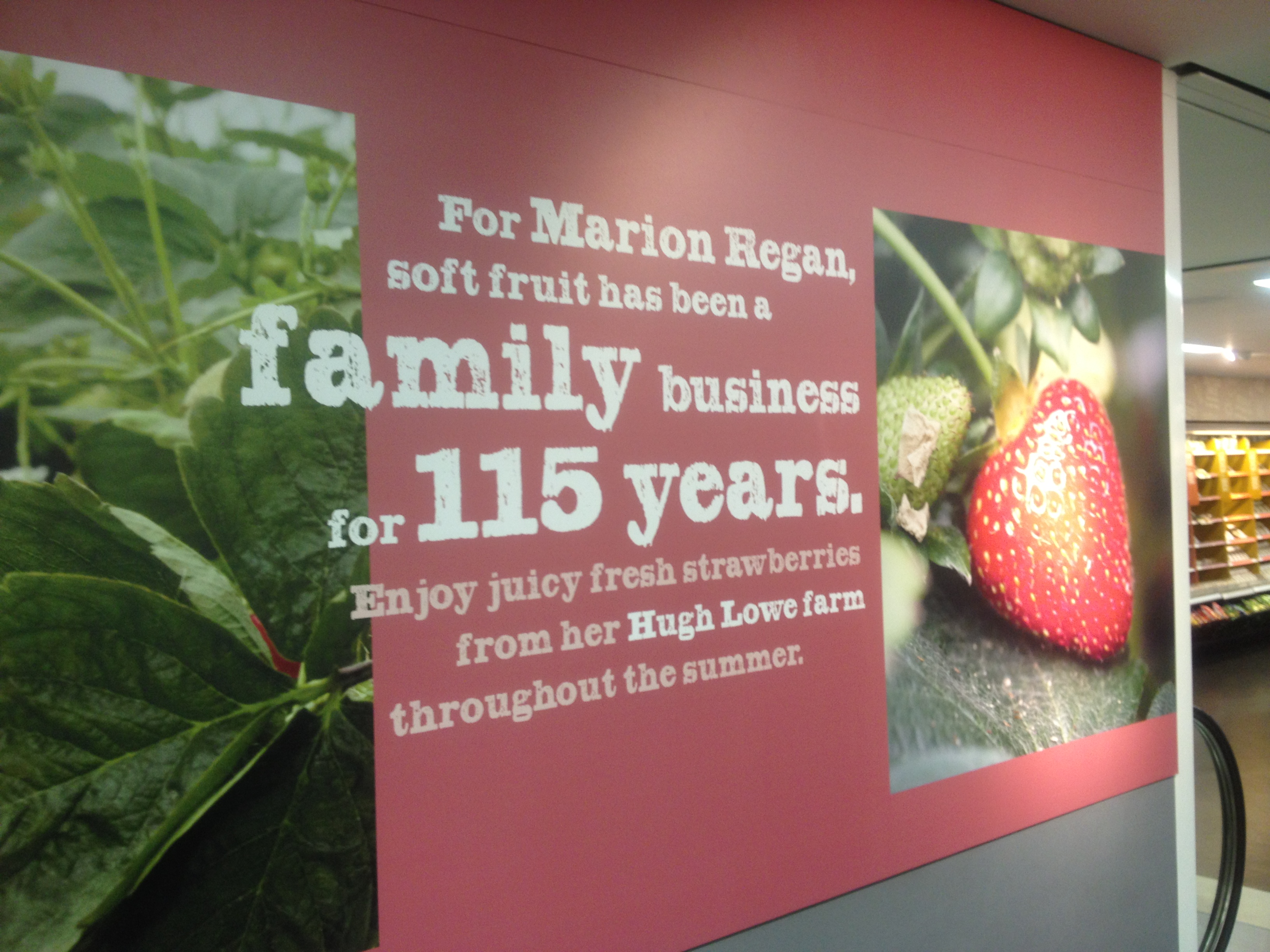
The story of Marion Regan’s soft fruit farm in two sentences
These two sentences, coupled with a great image, communicate a tremendous amount of information whilst also triggering a number of emotional responses in the viewer. In seconds we know that the Regan fruit farm is family run, with all it’s connotations of good, hard-working, honest folk who care deeply for their business and the land — after all they’ve been doing it for more than a century. The image of the glistening, luscious ripe strawberry and rich green leaves, coupled with the words “fresh and juicy”, instantly give the sense of the product being wholesome and succulent. Maybe I’m more susceptible to these kind of messages than some, but I want to taste Marion Regan’s strawberries.
The same principles are applied throughout the range of posters.
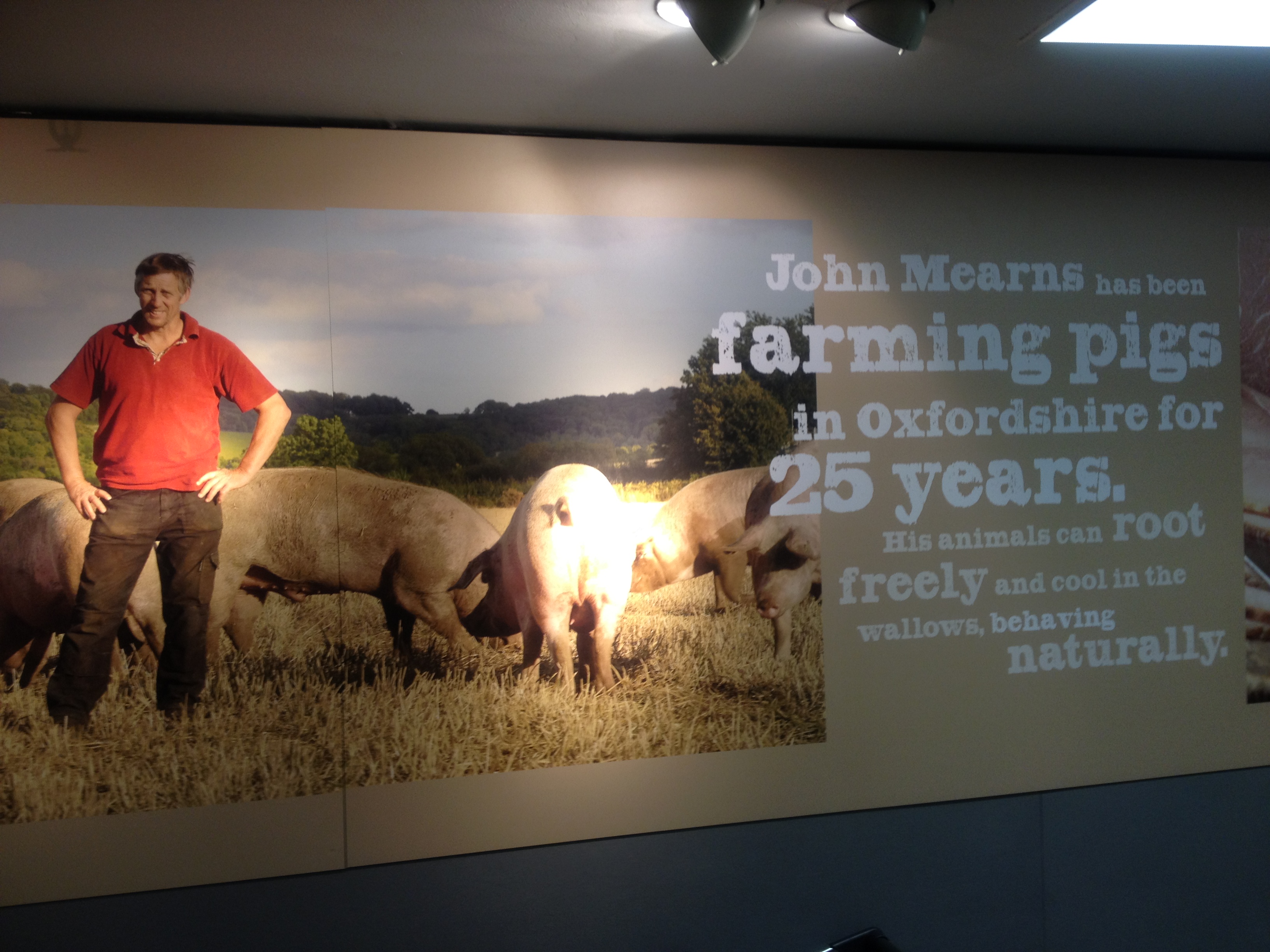
Smiling farmer, rolling hills, happy pigs
We learn John Mearns’ has been rearing pigs for 25 years, and that they are free to root around in the open air. The photo of the smiling Mr Mearns standing amidst his (seemingly happy) pigs and rolling green hills, whilst bathed in the golden glow of an English summer day makes me say “hey, if I’m going to eat some bacon, I want it to come from the friendly looking Mr Mearns who’s been doing this for most of his life and lets his pigs wander freely around those lovely looking hillsides”. And the same goes for Orkney crab fisherman Shaun Dennison, and Robert Hinge with his Kent grown Cox’s Apples.
Story and the web
So what’s this got to do with web design or online marketing? Well, aside from the evocative imagery and carefully crafted copy, what struck me was this campaign’s reliance on storytelling to get the message across. In one or two sentences, each poster tells a story — not the kind you tell your children at bedtime, sure, but stories nonetheless. Of course this is nothing new — stories have been used to sell things to us for centuries, whether it be gods, or washing powder. It is so commonplace that most of the time we don’t even think about it, and yet, when considering web design, we don’t usually associate it with storytelling.
At our agency, we believe that story is a frequently overlooked, yet highly effective way to communicate an idea or promote a company online, and the use of story is a core element in our design process. For some products or organisations, an effective narrative may not always be immediately apparent, yet even with a seemingly run-of-the-mill product or service, there are ways to create a narrative or emotional journey that engages an audience.
Saddleback Leather — a tale of adventure and hand-crafted leather goods
Leather goods, for example, may not seem like an obvious product to offer a compelling story, but Saddleback Leather, a purveyor of fine hand-crafted leather goods, would prove that assumption to be false. If you visit the company’s website, prominently featured on the front page (and also the second item in the top-level navigation) is a link entitled “The Saddleback Story”. In that section, Dave (founder and owner of Saddleback Leather) details the story of commissioning his first leather bag from a Mexican leather worker and how that event lead to the creation of his company.
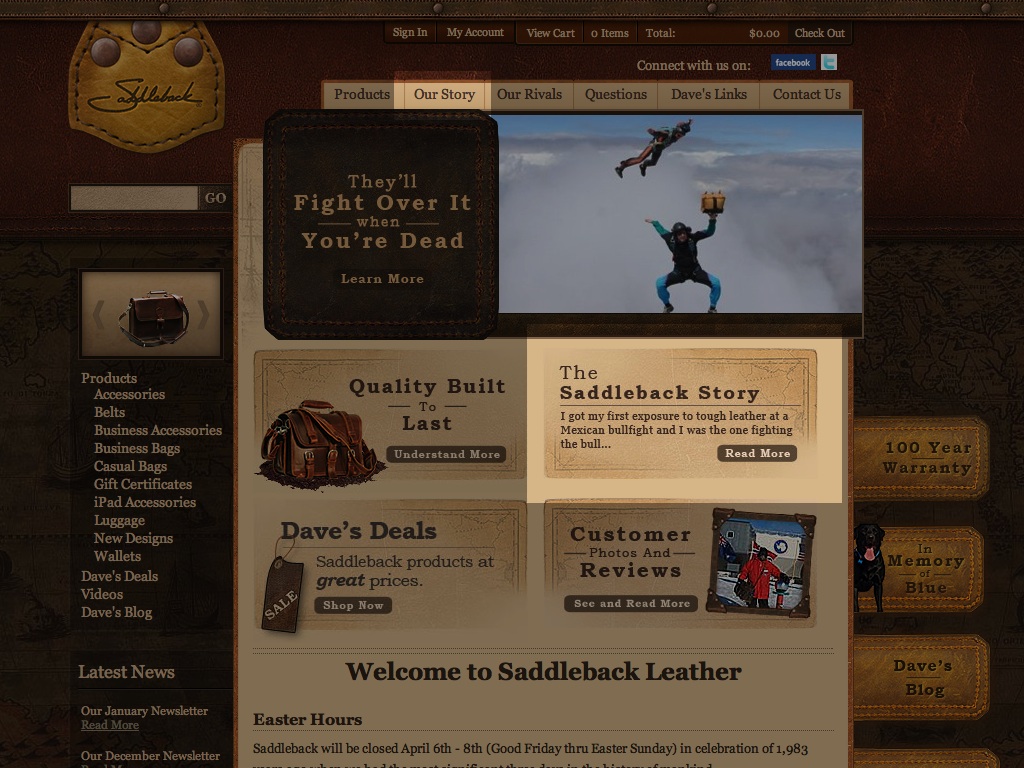
The Saddleback story is featured prominently on the home page
It’s an engaging tale, peppered with details about his experiences in Mexico: his fifteen minute long career as a bullfighter, living in a $100 a month apartment in Juarez (a notoriously dangerous city near the Mexico-USA border), meeting his “hot” wife, the birth of his daughter, and his devoted black labrador, Blue. What makes the narrative so effective is that throughout the tale he weaves in references to the quality and workmanship that goes into the bags his company produces.
He writes of the leather-working lineage of bag maker Don David, how years of using his own bags has lead to improvements in stitching and durability, the tough conditions his bags have been put through, and how they stay looking good after years of abuse. The result is that you get to the end of the story, and you feel like you know something about the man behind the business, you get a sense of his passion for what he does and the values his company stands for. And, most importantly, you want one of those tough as nail, beautifully hand-crafted leather bags.
The Red Cross — making us care
Not all stories have to be as adventure filled as Saddleback Leather’s to effectively communicate a service. In recent years charities have led the way in bringing the personal narrative into promoting organisational activity. Powerful imagery and stories focusing on individuals, rather than groups, have been used effectively in appeal messages and commercials. The British Red Cross uses stories of how people have been helped by the charity’s Social Care program to make problems concrete for site visitors, and create emotional engagement.
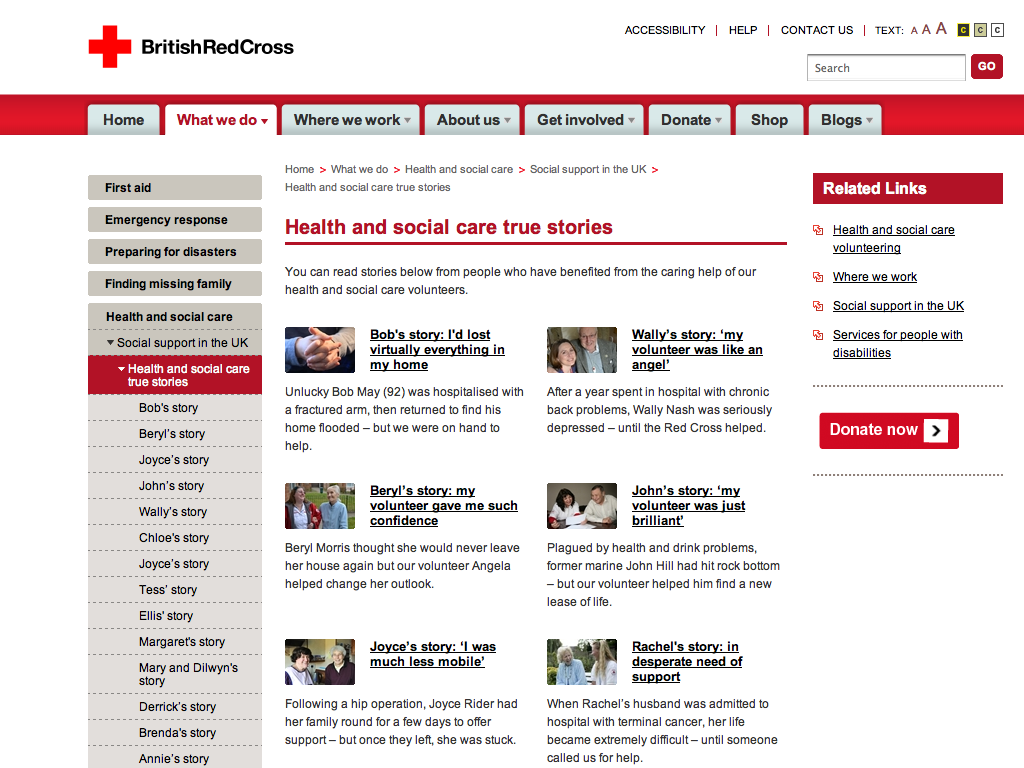
The British Red Cross Social Care true stories page
Reading about how the charity’s efforts helped a girl overcome a debilitating illness, a man cope with the loss of his wife, or a woman suffering from agoraphobia frames the organisation’s work in a personal and relatable context. My own company is using this approach on a charity site we are currently designing. We have encouraged staff to collect together stories about the women and children the charity has helped, and create a library of case studies to use throughout the year. Eventually, we hope to include video diaries and short documentaries.
I hope this may help stimulate those of you looking to find ways to make your websites and online marketing stand out. Have you any other great examples of stories used on websites? Let us know in the comments.



One Comment on “Online marketing and the power of a good story”
Pingback: Assignment 2: Point of sale display – initial research & ideas | gemma513414's Blog